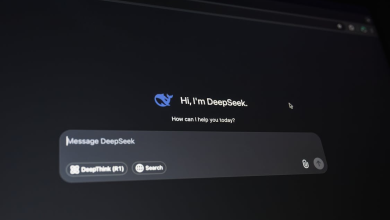
In April 2025, the U.S. Financial Crimes Enforcement Network (FinCEN) sounded a major alarm: ISIS and affiliated groups are exploiting charities and virtual assets to fund extremist activities. This is not speculative. It is happening right now, through the deliberate use of micro-donations and sophisticated deception to conceal illicit flow of funds.
However, individually small, these transfers collectively can fund large-scale attacks. The tactic is chilling in its simplicity and devastating in its effectiveness. And while the use of charities as terrorist fronts isn’t new, the confluence of anonymity and anti-money laundering (AML) systems designed for an earlier era makes this a new kind of threat: one that demands a fundamentally new response.
Navigating Charitable Giving in an Era of Financial Crime
Among feelings of uncertainty experienced by many countries around the world, both local and global charitable donations have been on the rise to help those in need. According to Giving USA, donations in the U.S. grew to almost $6B in 2024, an increase of 6.3% compared with 2023. Human services and education non-profits received some of the most funds in the U.S., with organizations such as Feeding America generating revenues of more than $5B. Legitimate charities who aim to make the world a better place and help the world’s most vulnerable populations are put at risk by the actions of bad actors who take advantage of donors’ good intentions by soliciting funds through fake charities. Those who are made aware that they have accidentally donated to organizations that harm, rather than help, vulnerable communities are reluctant to make donations in the future. It is in the interest of the entire system to ensure that bad actors don’t get away with their crimes.
Rule-Based Safeguards Are Failing
For decades, the U.S. and EU have relied on rule-based AML systems to combat financial crime, particularly counter terrorism financing (CFT). Currency transaction reports (CTRs) are triggered at $10,000, though since March of this year FinCEN temporarily lowered this threshold to $200 for certain money services businesses operating in specific ZIP codes across the U.S. Nevertheless, bad actors have learned how to game the system. They simply transfer smaller amounts, route funds through intermediaries, or use jurisdictions with limited regulatory reach. These are not bugs in the system; they are the inevitable consequence of rules that can be anticipated, and therefore circumvented. One recent example of this was Venezuelan criminal organization Tren de Aragua’s money laundering scheme that was discovered in Chile. They had been moving millions of dollars to various countries in South America, the U.S., and Spain.
The Terror-Financing Seen In Practice Over Decades
This isn’t a hypothetical risk; it’s a playbook long in use. When it comes to the hijacking of humanitarian good will to fund terrorism, two further challenges crop up: First, many NGOs are cash intensive due to the markets they operate in, making their financial flows harder to trace. Second, micro-donations, while well-intentioned, are inherently difficult to monitor at scale, especially when dispersed across opaque or unregulated channels. The Global Relief Foundation (GRF), a Chicago-based charity, raised over $5M annually for Al-Qaeda and the Taliban via micro-donations. It exploited the two facts above that remain true today: that NGOs operating in conflict zones are often cash-intensive; and that small donations typically escape heightened scrutiny.
More recent cases confirm this vulnerability persists. In June 2025, Addameer, a legal aid NGO, was officially sanctioned after evidence revealed it funneled small donations to various designated terror groups. The year before, the group Samidoun was sanctioned for using the same tactics. Despite being designated a terror organization in the U.S. and EU, Samidoun still operates in jurisdictions like Spain, hosting webinars with Houthi leaders and openly glorifying terrorism. The situation is clear: our safeguards remain far behind the evolving threat.
The Case of AI: Detection That Breaks The Rules And Offers Hope
The answer is not just stronger rules, it’s smarter defense. AI‑based detection doesn’t rely on pre-set thresholds. Instead, it identifies patterns: a sudden spike in donor behaviors, such as a quintupling in micro‑donations to unvetted entities. Furthermore, advanced AI tools such as visual network‑analysis can map relationships between wallets, donors, and flagged entities or even geospatial patterns that suggest coordinated money laundering.
With AI-driven financial crime detection, cash and digital deposits are no longer a full-immunity safe haven. These tools don’t just enhance human investigators; they accelerate them. What once took teams of analysts weeks to uncover, AI can now surface in hours or even minutes. Instead of spending weeks manually investigating before an issue is escalated, compliance teams can use AI to automatically prioritize high-risk cases, strengthening their ability to detect and respond to threats before they escalate or cause harm.
Rebuilding Trust in Humanitarian Giving
Charitable giving thrives on trust. If that trust is broken; if people fear their donations risk being weaponized; it’s not just victims of terrorism who suffer, but legitimate aid recipients around the world.
To restore confidence and resilience, we must embed AI into AML infrastructure, bolster due diligence on nonprofits, and share threat intelligence across jurisdictions and platforms. We must recognize that the rule-based status quo, largely unchanged since the early 2000s, is woefully ill-equipped for the hybrid threat landscape of 2025.
As financial systems grow more digital and global and intersect in unpredictable ways, the misuse of humanitarian goodwill is no longer a side note. It’s a central front in the war on terror finance. We must bring our most powerful tools to bear, and today, that means AI. This is not just policy; it’s a moral imperative. Our collective security depends on it.


